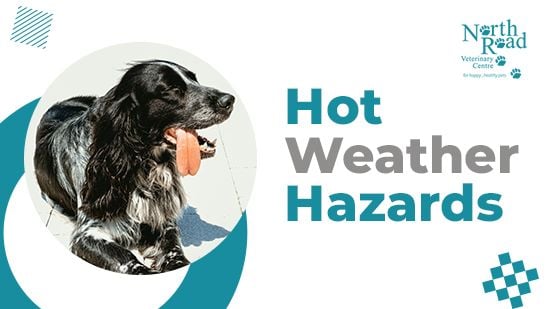Hot Weather Hazards: How to Keep Your Dog Safe This Summer
)
As the summer heat rises, it’s important to consider the impact on our pets. Just like us, our dogs are susceptible to the dangers of hot weather, including overheating and burns from scorching pavements. In this blog, we’ll walk you through common hot weather hazards for dogs and offer practical tips to keep your furry friend safe. Whether it’s managing their walks or protecting them from heatstroke, here’s what every pet owner should know during the warmer months.
The floor is lava: Hot pavement
Summer days may be great for outdoor fun, but hot pavement can be dangerous for your dog. Under the sun, roads and footpaths can reach temperatures high enough to cause serious burns to your dog’s paw pads. If the pavement feels too hot for your hand or bare foot, it’s too hot for your dog’s paws.
Safe Walking Tips:
To protect your dog’s paws, it’s best to walk them early in the morning or later in the evening, when the pavement has cooled down. If you need to go out during the day, stick to grassy areas, as they don’t absorb heat like concrete does. You can also test the surface yourself by pressing your hand against the pavement for ten seconds—if it’s uncomfortable for you, it will be for your dog too.
Heat-Related Illness: Understanding the Risks
When dogs overheat, their internal body temperature can rise to dangerous levels, leading to heat-related illnesses.
Any dog can be at risk, but certain factors, like thick coats, obesity, or brachycephalic (flat-faced) breeds, make some dogs more vulnerable.
What to Watch For:
Early signs of overheating include increased thirst and panting, known as heat stress. If left unchecked, this can progress to heatstroke, a life-threatening condition that can cause organ damage.
Symptoms of heatstroke include
- heavy panting
- excessive drooling
- weakness
- red gums,
- in severe cases, seizures or collapse.
How to Respond to Overheating
If your dog begins to show signs of overheating, stop all activity immediately and move them to a cool, shaded area. Offer cool (but not ice-cold) water and monitor their condition closely. If you notice symptoms of heatstroke—such as disorientation, vomiting, or collapse—take immediate action.
- Wet your dog’s body with cool water, place them in front of a fan or air conditioning
- contact our veterinary team or an emergency clinic immediately.
To keep your dog cool during the summer, always ensure they have access to fresh water and shaded areas. For dogs at higher risk of overheating, such as those with thick coats or flat faces, it’s best to keep them indoors on particularly hot or humid days with a fan or air conditioning. Avoid exercising your dog when temperatures exceed 28-30°C, and never leave them in a parked car, even for a short time.
If you have any further questions about keeping your pet safe this summer, contact our team on (03) 9596 4804, we are always happy to help.
Stay cool!
| Tags:Client InformationHealth AdviceProactive Pet CarePet Safety |
)